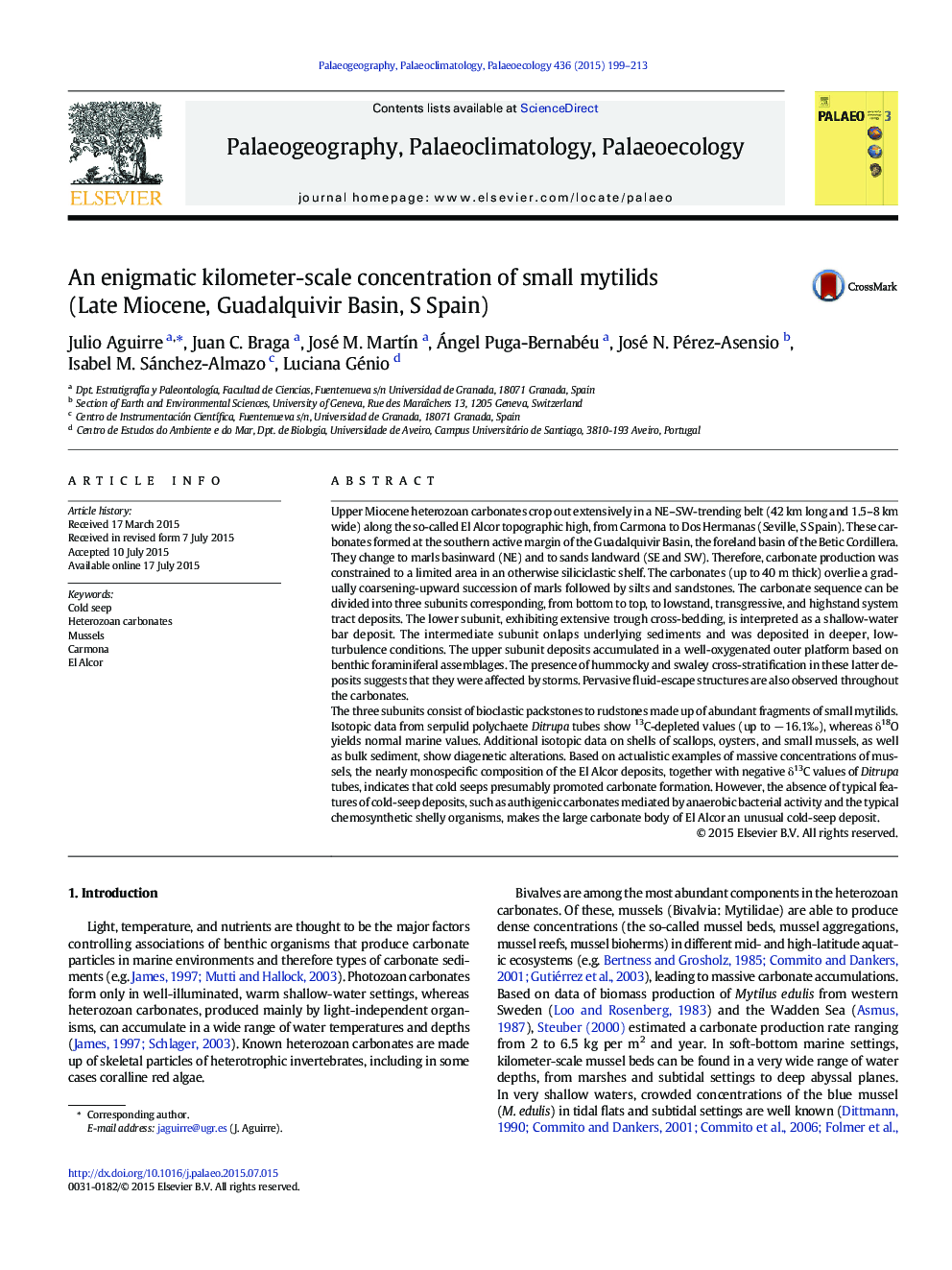| کد مقاله | کد نشریه | سال انتشار | مقاله انگلیسی | نسخه تمام متن |
|---|---|---|---|---|
| 4465906 | 1622154 | 2015 | 15 صفحه PDF | دانلود رایگان |

• Heterozoan carbonates crop out in the S margin of the Guadalquivir Basin (S Spain).
• They form a narrow belt surrounded by terrigenous in the El Alcor topographic high.
• 95% of the skeletal components are small mytilids.
• Negative C isotopes of Ditrupa shells and fluid-scape structures are pervasive.
• The carbonate body of El Alcor is interpreted as an unusual cold-seep deposit.
Upper Miocene heterozoan carbonates crop out extensively in a NE–SW-trending belt (42 km long and 1.5–8 km wide) along the so-called El Alcor topographic high, from Carmona to Dos Hermanas (Seville, S Spain). These carbonates formed at the southern active margin of the Guadalquivir Basin, the foreland basin of the Betic Cordillera. They change to marls basinward (NE) and to sands landward (SE and SW). Therefore, carbonate production was constrained to a limited area in an otherwise siliciclastic shelf. The carbonates (up to 40 m thick) overlie a gradually coarsening-upward succession of marls followed by silts and sandstones. The carbonate sequence can be divided into three subunits corresponding, from bottom to top, to lowstand, transgressive, and highstand system tract deposits. The lower subunit, exhibiting extensive trough cross-bedding, is interpreted as a shallow-water bar deposit. The intermediate subunit onlaps underlying sediments and was deposited in deeper, low-turbulence conditions. The upper subunit deposits accumulated in a well-oxygenated outer platform based on benthic foraminiferal assemblages. The presence of hummocky and swaley cross-stratification in these latter deposits suggests that they were affected by storms. Pervasive fluid-escape structures are also observed throughout the carbonates.The three subunits consist of bioclastic packstones to rudstones made up of abundant fragments of small mytilids. Isotopic data from serpulid polychaete Ditrupa tubes show 13C-depleted values (up to − 16.1‰), whereas δ18O yields normal marine values. Additional isotopic data on shells of scallops, oysters, and small mussels, as well as bulk sediment, show diagenetic alterations. Based on actualistic examples of massive concentrations of mussels, the nearly monospecific composition of the El Alcor deposits, together with negative δ13C values of Ditrupa tubes, indicates that cold seeps presumably promoted carbonate formation. However, the absence of typical features of cold-seep deposits, such as authigenic carbonates mediated by anaerobic bacterial activity and the typical chemosynthetic shelly organisms, makes the large carbonate body of El Alcor an unusual cold-seep deposit.
Journal: Palaeogeography, Palaeoclimatology, Palaeoecology - Volume 436, 15 October 2015, Pages 199–213